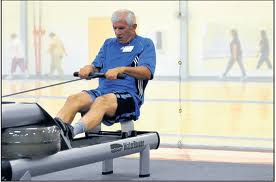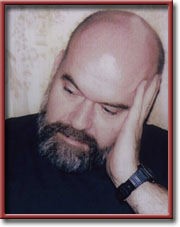Don’t Duck; Get HIT
“Why waste scarce time if it takes as long to get and stay fit as convention suggests—about 150 minutes a week? But it doesn’t. In fact, just the opposite.” Sanford Rose
Dolors & Sense
by Sanford Rose

 KISSIMMEE Florida—(Weekly Hubris)—10/1/2012—Or HIIT. Either High-Intensity Training or High-Intensity Interval Training.
KISSIMMEE Florida—(Weekly Hubris)—10/1/2012—Or HIIT. Either High-Intensity Training or High-Intensity Interval Training.
It’s becoming increasingly clear that the conventional approach to exercise is both incorrect and counter-productive.
It is incorrect because it emphasizes the aerobic.
It is counter-productive because that emphasis, by mandating over-long periods of exercise, reduces the incentive to do any exercise at all.
Why waste scarce time if it takes as long to get and stay fit as convention suggests—about 150 minutes a week?
But it doesn’t. In fact, just the opposite.
Long, slow exercise sessions, fueled by oxygen (ergo aerobic), eventually weaken the body.
Short, fast sessions, fueled not by oxygen, but by glucose (ergo anaerobic), strengthen it.
Long sessions, which burn some fat, prove futile because they encourage the restocking of that fat.
Short sessions, which first deplete glycogen stores, prove successful because they lead to post-exercise fat loss as the body invades its fat stores to replenish the lost glycogen.
How short is short?
That depends on exercise intensity. If you rev up, say, stationary cycling to around 170 revolutions a minute on a good machine, you recruit in the neighborhood of 80 percent of the muscle fibers in the entire body (not just those in the quadriceps, which is the primarily affected area).
By contrast, jogging on a treadmill employs only 20 percent of the body’s musculature.
The extra utilization expends enough energy to keep and maintain the heart and lungs in top-flight condition even if it lasts just 20 seconds and is repeated, after a brief rest period, only two more times a session on three days a week.
No, you didn’t misread. The science demonstrates that one needs only about three minutes a week of properly performed anaerobic activity to attain optimal heart-health benefits. (But be sure to work up to the levels required in carefully graduated steps.)
As one prominent author points out, the heart is, after all, just another muscle. One would not tell a bodybuilder that he/she can train the biceps adequately by lifting 10-pound weights for 20 minutes. Why should one tell him that he can train his heart adequately by utilizing only a fraction of its capacity for a comparable period of time?
Replacing old hat (time-consuming traditional aerobic workouts) with new HIT (one-minute sessions) is obviously the key to saving the country.
Well, it is (although there are perhaps a few other keys as well).
The country is close to bankruptcy because of the epidemic of diseases largely spawned by obesity and grouped under the heading of metabolic syndrome.
The leading symptom of metabolic syndrome is insulin resistance—the inability of the body’s cells to use insulin to remove adequate amounts of the sugar circulating in the blood.
A few sessions of HIT can dramatically improve the insulin sensitivity of even those who are relatively resistant to the many other benefits of intensive exercise.
HIT is it. A show stopper.
